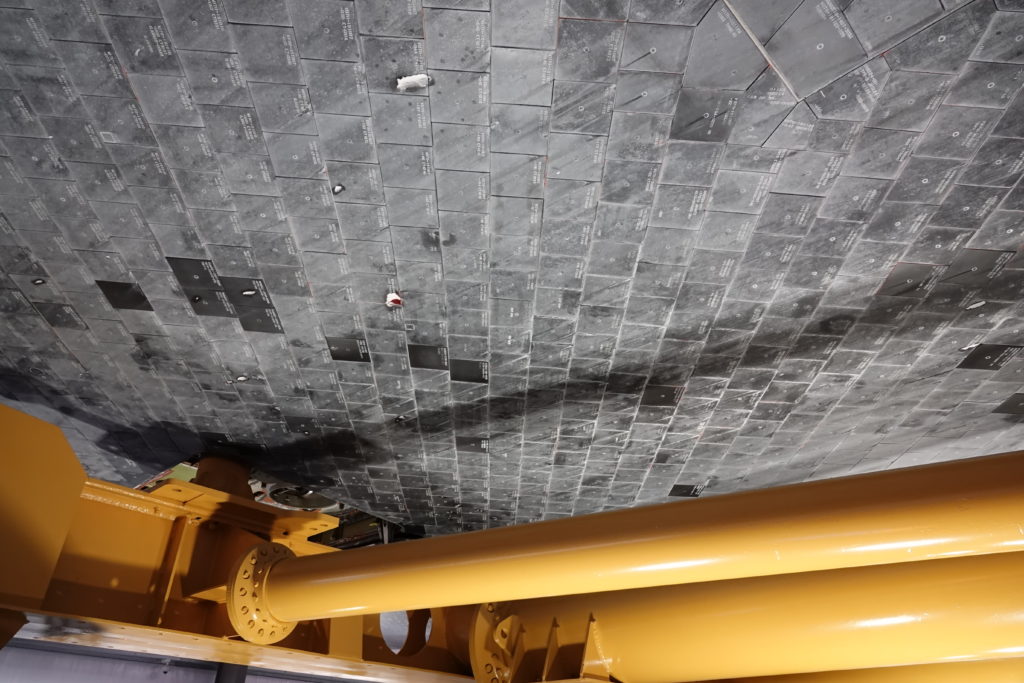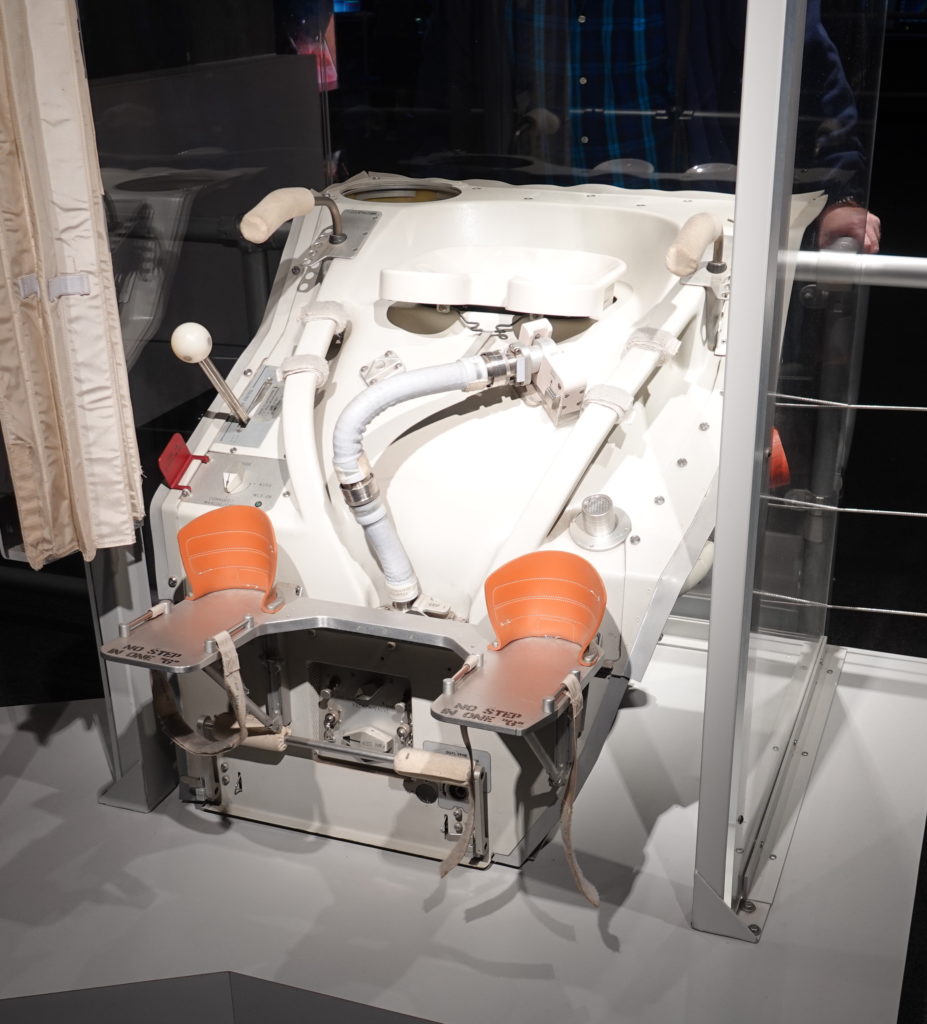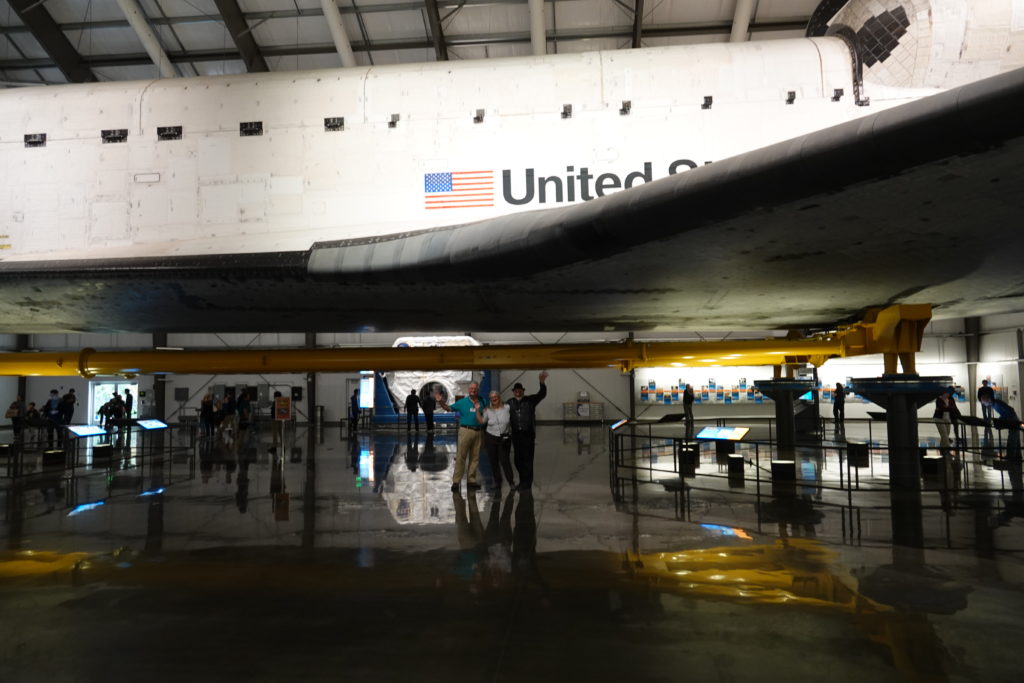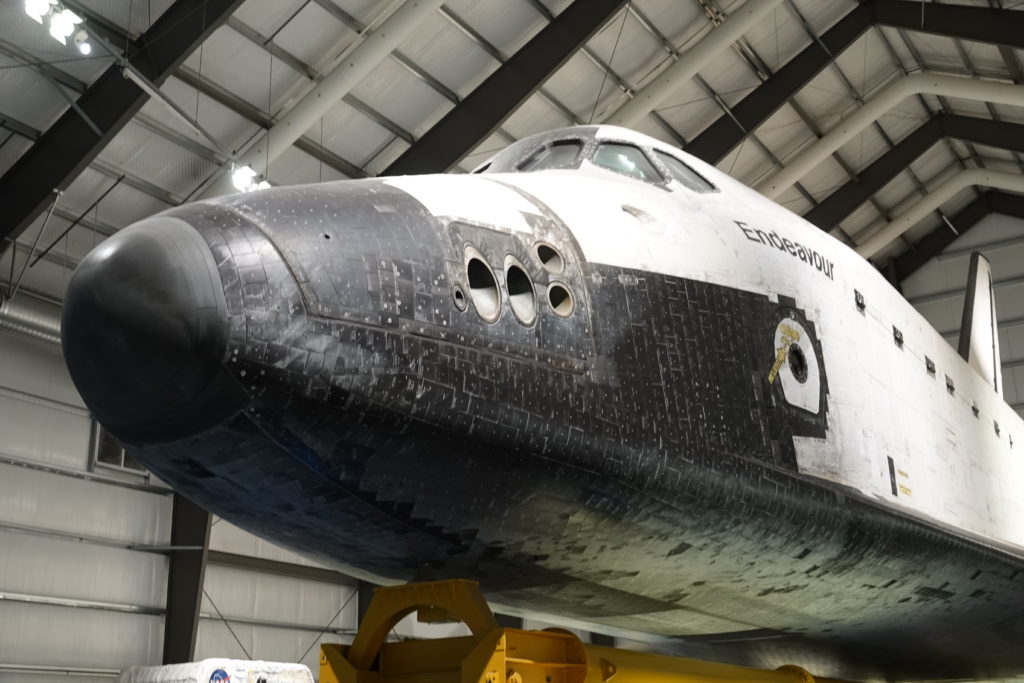Felt!
Funny stuff, felt. You might think of it as a material for costuming, hats, or artwork, but it played a fundamental role in the most advanced transportation of both the eighteenth and the twentieth centuries. Long time readers of this blog (both of you) may remember when we crossed the Pontcysyllte Aqueduct, perhaps the greatest engineering achievement of the canal age. It is a mighty iron trough held up on stone piers. The sections of cast iron were bolted together and the joints were waterproofed with felt gaskets.
Fast forward to the twentieth century, and the space shuttle.

To withstand the three thousand degree heat of reentry, the body is covered with heat resistant tiles, that are a sort of silica ceramic.

However, when heated, these expand less than the aluminum body of the space shuttle, so to prevent them breaking or coming off each one had to be mounted on a flexible pad of felt.
Yes, we went to see the space shuttle. First there is an exhibit about living in space, including NASA’s famous space toilet.

Your typical high gravity toilet had a hole in the seat that is a foot or more across. The space potty has only a four inch aperture, so a precise aim is required. In order the train the astronauts on correct alignment, NASA had a training toilet built with a camera under the seat so that they could check on a screen if they were correctly placed over the hole. Fortunately this was before the days of YouTube.
Then we had the video of the space shuttle Endeavour being rolled to the museum through the streets of LA with tree branches being trimmed ahead of it so that it would fit. Finally they let us in to the shed where it is housed temporarily, until they stand it on end as if it was ready for take off. I like it better like this, though, as you can walk underneath.

That’s Paula and me standing underneath with Jerry, one of the engineers who worked on the shuttle program for thirty years. He was a specialist in the aerodynamics and thermodynamics of the reentry, and had some good engineering war stories to tell. For instance, some of the thermocouple heat sensors in the tiles, about where the shock wave from the nose cone crossed the wing, would give readings that were well out, and would sometimes suddenly change by hundreds of degrees. The problem was not solved for some years until the space shuttle engineers went drinking with some naval ICBM guys, and they worked out that the shock wave contained ionized gas (ie charged particles) which could spin in vortices. This would emit radio waves, and the wire leading to the thermocouple would act as an antenna, picking up the radio waves and generating electricity, which threw off the thermocouple reading. I was blown away just by seeing the engineering but Paula particularly enjoyed learning about the shuttle from someone who had worked on it.

After the space shuttle we headed for a completely different museum, The Museum of Jurassic Technology. This is a surreal cabinet of curiosities, some remarkable, some weird, and some just, oooh, look, a baby pigeon. They don’t allow photography, so you will have to imagine the statue of Goofy carved from human hair, the oil portraits of the dogs of the Russian space program, the white X-ray bat that flies through trees, the mosaics of butterfly wings, Ricky Jay’s crumbling celluloid dice, the guy playing the weird medieval musical instrument that was a cross between a violin and a typewriter, and Tsiolkovsky’s notebooks. Tsiolkovsky, or Константи́н Эдуа́рдович Циолко́вский as I like to call him, was the great visionary of space exploration. Writing around 1900 he described the exploration of space, including the use of multi-stage rockets, space suits, airlocks, working in zero gravity, and growing plants in space for food and oxygen. His work inspired rocketry and space exploration. Without Tsiolkovsky there would have been no space shuttle, and not even the oil portraits of the dogs of the Russian space program.
Tsiolkovsky also came up with the idea of the space elevator. We’re still waiting for that one, but he got everything else right, so it’s probably only a matter of time.

I’m betting that somewhere the entire space elevator system will depend on a piece of felt.